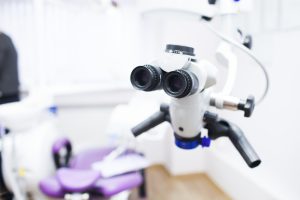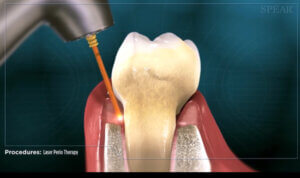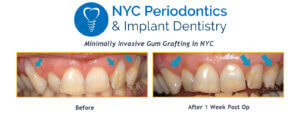Teeth sometimes decay and need to be removed or extracted. This can be for any number of reasons. When a tooth is removed, it leaves an exposed socket that will often heal on its own, but it is well documented that this results in the loss of both bone volume and height. To alleviate this, many periodontics professionals choose to put material in the socket and attach it to keep the shape of the bone and soft tissues until it is possible to include a dental implant. Socket grafting after tooth extraction has been a popular procedure that only takes a few minutes to perform, and it greatly increases the success rate of restoring the socket allowing for later dental implants. Of course, immediate implants, if possible, ignore that and hope to integrate the immediate implant into the socket during the healing process.
Optimal Dental Implant Placement and Socket Grafting
The anterior maxilla, the front part of the upper jaw, is almost always associated with a thin, frail buccal plate which is easily damaged during routine tooth removal, resulting in a deformed ridge necessitating bone augmentation to place an implant in an optimal position for prosthetic restoration. The resorption of the alveolar process, the thickened ridge of bone that holds the teeth, following a tooth extraction is significantly greater on the buccal aspect than lingual or palatal, and the reduction in width is greater than in height. The post-extraction bone loss occurs during the first month averaging 3-5mm at 6 months. Therefore, the preservation of the alveolus at the time of extraction of prominent roots in the anterior maxilla is crucial to allow optimal implant placement. Simply, the early periods of time just after tooth extraction are most important in maintaining the structure and aesthetics of the socket.
Research On Socket Grafting
Recently, an article entitled “A Study of the Fate of the Buccal Wall of Extraction Sockets of Teeth with Prominent Roots,” authored by Dr. Myron Nevins was published in The International Journal of Periodontics & Restorative Dentistry. While reading it, I pondered what this could mean for my Manhattan practice.
This study analyzed cat scans before and after tooth extraction. At the test site, once the tooth was very carefully removed, a bone graft was placed into the socket, and primary soft tissue closure was obtained. The control site reflected only tooth removal with no graft or primary soft tissue closure. Results showed that at 180 days, filling of the fresh extraction socket with Bio-Oss and primary closure increased the probability of maintaining the original crestal height and form and thereby allowed ideal implant placement.
This study confirms other similar clinical studies. They all imply that it is extremely important to maintain and preserve the entire buccal housing upon tooth removal and achieve primary closure.
Like many other periodontics procedures, conservative microscopic techniques provide minimal trauma, fast healing, and little inflammation. This will maximize the regeneration result and allow for proper implant placement. My Manhattan practice has been utilizing these microscopic techniques in every possible procedure, and I have seen these benefits time and again. Microscopic technology allows for tighter cuts, more precise grafts, and less overall trauma that results in faster healing times and better implant placement.
Periodontics is a constantly evolving field. My practice is always at the forefront of whatever technologies are available, and consistently bring those advanced technologies to our patients. If you are in Manhattan and looking for periodontics work you need, look no further than my practice.
Call (212) 702-9088 for a consultation, and you can see what quality of care we can bring.




